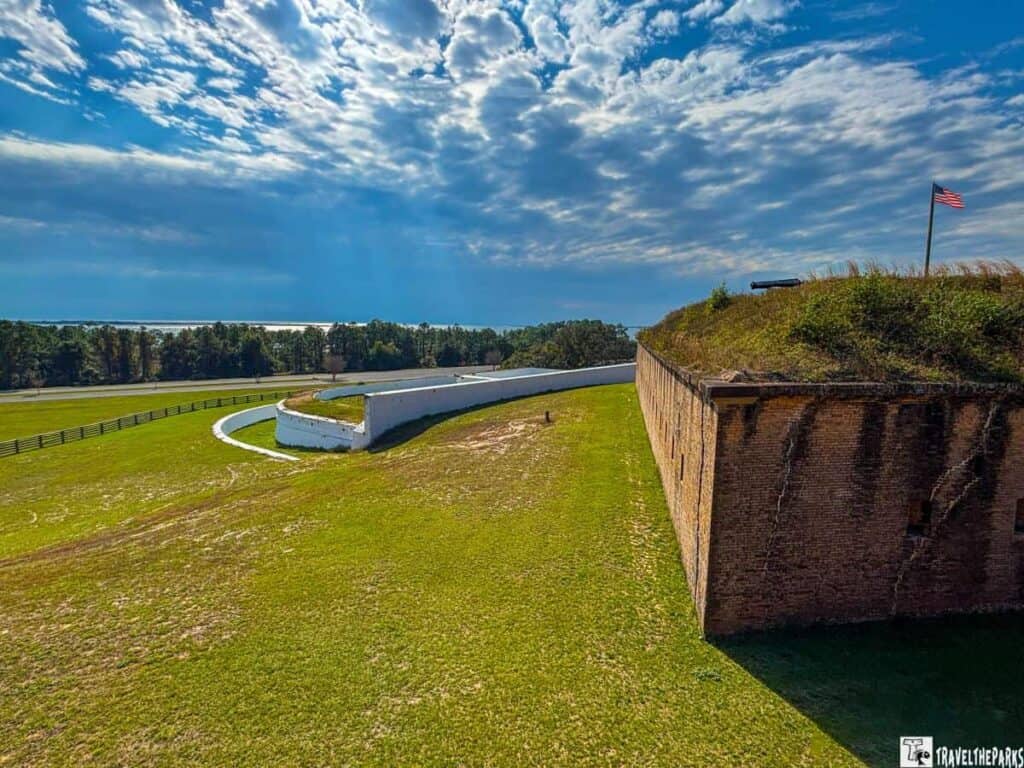As lighthouse lovers, we’ve visited a fair number of these iconic coastal structures, and on our recent trip to the Gulf Coast, we had the chance to explore the Pensacola Lighthouse & Maritime Museum in Florida. Known for its striking black-and-white spiral design, the Pensacola Lighthouse is one of the oldest lighthouses in the United States. If you’re looking for things to see at the Pensacola Lighthouse, you’ll find it’s more than just a beacon. Here’s a breakdown of 10 amazing things we discovered during our day at the Pensacola Lighthouse.
This post may contain affiliate links, meaning if you purchase something through one of these links, we may earn a small commission at no extra cost to you! Read the full disclosure policy here.

Table of Contents
Getting to the Pensacola Lighthouse and Maritime Museum
To get to the West Gate entrance of the Pensacola Lighthouse, follow these general driving directions:
- From Downtown Pensacola: Head south on Palafox Street toward West Government Street. Continue onto S 17th Avenue and follow signs for Gulf Breeze Parkway/US-98 W. Drive west on US-98 toward the Pensacola Naval Air Station (NAS) area. When you reach the main entrance to NAS Pensacola, continue to the West Gate entrance. T
- From Pensacola Beach: Take Fort Pickens Road (Hwy 399) toward Pensacola. Continue until you reach the intersection with US-98 and turn left. Follow the road toward the West Gate entrance at the Naval Air Station.
- The West Gate is on Radford Blvd, and you’ll see signs for Pensacola Lighthouse, Fort Barrancas-Gulf Islands National Seashore and the National Naval Aviation Museum once you pass through the gate.
NOTE: All visitors must enter through a security checkpoint. Be sure to have a valid ID and any necessary documentation to enter the military base.
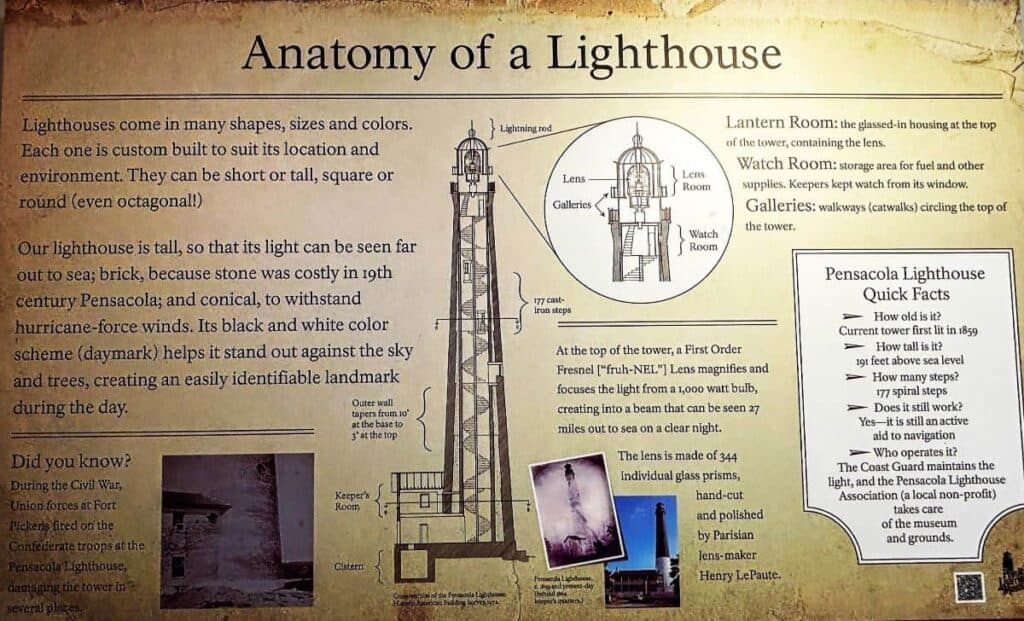
What to Know Before You Go to the Pensacola Lighthouse & Maritime Museum
- Location: 2081 Radford Boulevard Pensacola, Florida 32508
- Operating Hours: Open year-round daily 9:00 AM–4:00 PM. Closed Easter Sunday, Thanksgiving Day, Christmas Eve, Christmas Day, New Year’s Eve, and New Year’s Day
- Entrance Fees: Adults: $9.50, 12 & under: $6.50, 65 & up: $6.50 and Military Members: $6.50. (Includes access to all museum exhibits, grounds, and the climb to the top of the lighthouse tower)
- Parking: Free parking is available on-site.
- Pets: pets are not allowed inside the lighthouse or museum, service animals are welcome.
- Best Time To Visit: we recommend visiting during spring or fall when the weather is mild and the crowds are smaller. We visited in the winter (around Christmas), and it was peaceful with fewer tourists. However, it can be a bit chilly, so pack accordingly. Summer can be hot/humid, but if you don’t mind the heat, it’s a great time to enjoy the beach and lighthouse in one trip.
- What to Bring: Wear comfortable shoes, especially if you plan to climb the lighthouse or explore the grounds. The weather can get hot, so bring sunscreen, a hat, and water if you’re visiting during the warmer months. Don’t forget your camera to capture the spectacular views from the top of the lighthouse, as well as the historic buildings and grounds.
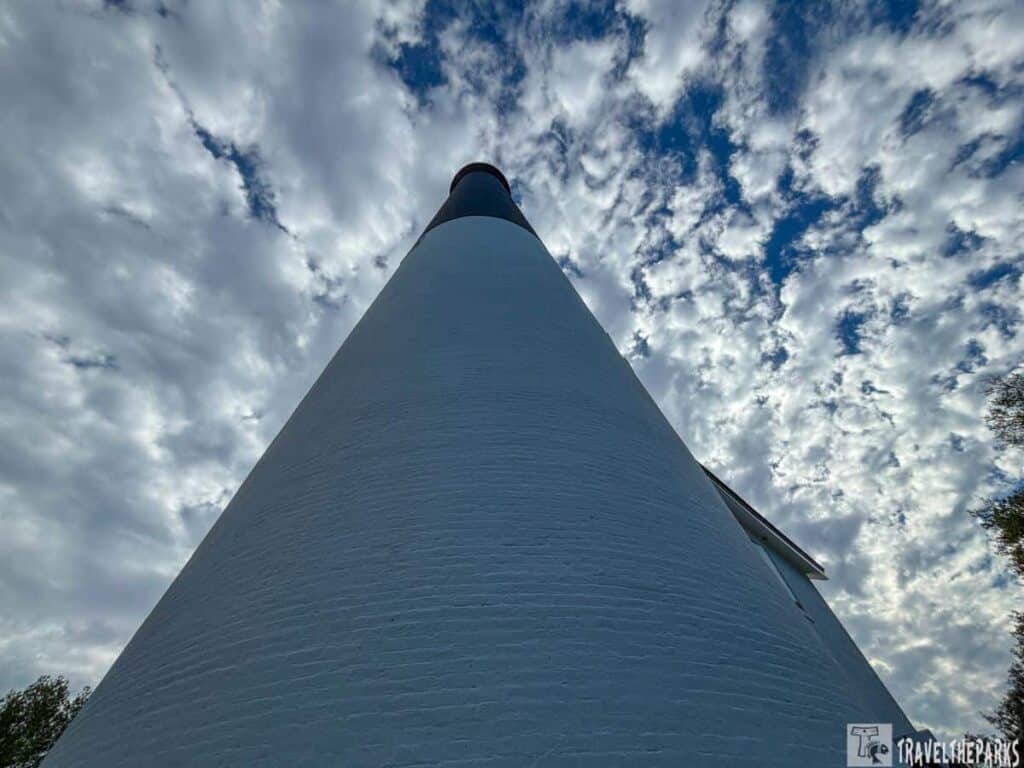
Brief Historic Overview of the Pensacola Lighthouse and Maritime Museum
The Pensacola Lighthouse and Museum, stands at the entrance to Pensacola Bay in Florida. Steeped in history, it was first constructed in 1824. This lighthouse has guided sailors safely into the bay throughout the 19th century. Standing 191 feet tall, it is one of the tallest lighthouses in the United States. Builders initially constructed the lighthouse to help vessels navigate the treacherous waters around the Gulf Coast, and it has withstood many challenges, including hurricanes and military activity in the area.

In 1859, they built the current lighthouse tower, replacing the original structure and adding the keeper’s quarters. The lighthouse played a crucial role during the Civil War; authorities even temporarily deactivated it in the 1940s for wartime security. In 1947, they relit the lighthouse, which continued its navigational aid until its automation in 1974. Officials listed the Pensacola Lighthouse on the National Register of Historic Places in 1974.
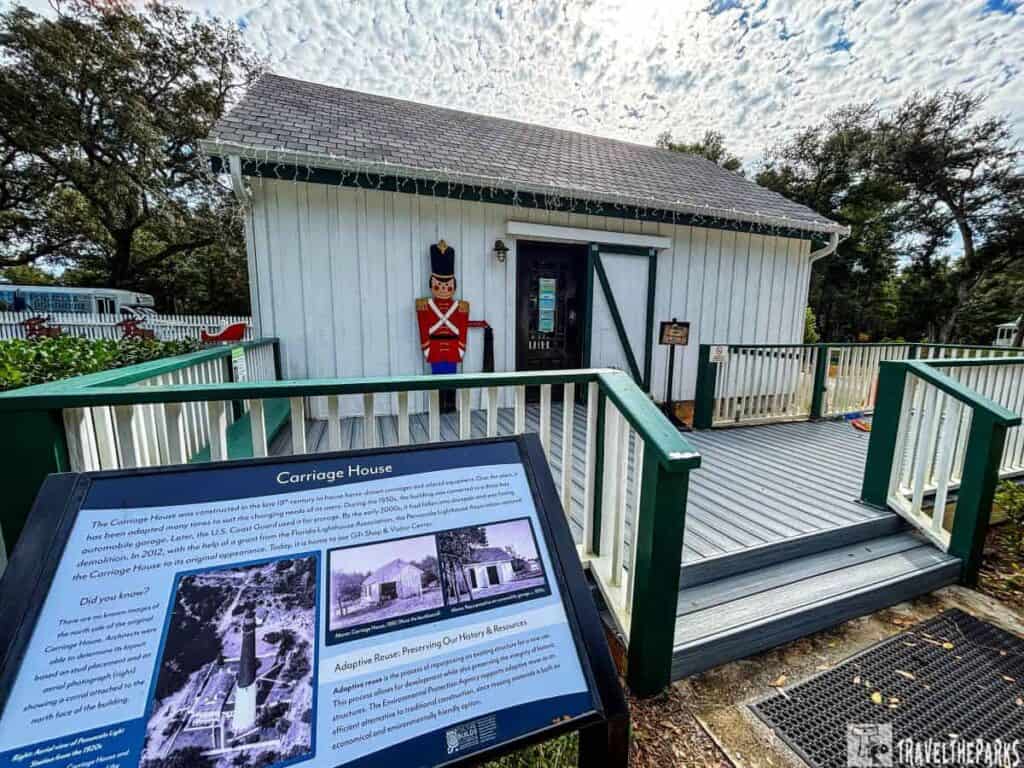
What Things to See at the Pensacola Lighthouse and Maritime Museum
1. Point of Interest Begin at the Visitor Center
Builders constructed the Carriage House in the late 19th century. This building was designed to store horse-drawn carriages and related equipment, serving the lighthouse keepers in an era before motor vehicles. As the needs of the lighthouse changed over the years, so did the Carriage House. In the 1930s, workers converted the Carriage House into a three-bay garage for automobiles; later, the US Coast Guard used it for storage. Today, the restored Carriage House serves as the Visitor Center and Museum Shop for the Pensacola Lighthouse.

2. The Best Highlight: Climb the Tower to the Top
The Pensacola Lighthouse continues to serve as a navigational aid and is open for public visits. Many people try to climb the 177 steps that go to the top. Even though it isn’t the tallest lighthouse at 150 feet, I think the views of Pensacola Bay, Fort Pickens and the Gulf Coast are amazing. Although we found the climb to be doable, it was a bit of a workout.
We’ve visited a few Florida lighthouses—St. Augustine’s towering 165-foot beacon, the 150-foot Pensacola Light with sweeping Gulf views, and the more modest 103-foot Crooked River Lighthouse on the forgotten coast of Florida. Each offering a unique perspective from dramatically different heights.
NOTE: Climbers must be at least 44″ tall or 7 years old. Children 12 & under cannot climb without a ticketed adult.

3. Explore the Notable Features of Keeper’s Quarters
The Keeper’s Quarters brings the lighthouse’s intriguing history to life. Exploring the Living History rooms inside the keeper’s house was like stepping back in time. I could just imagine what daily life was like for the lighthouse keepers and their families. The caretakers have thoughtfully preserved the simple yet functional living spaces. Authentic period furniture and belongings evoke nostalgia and helping us understand the past.
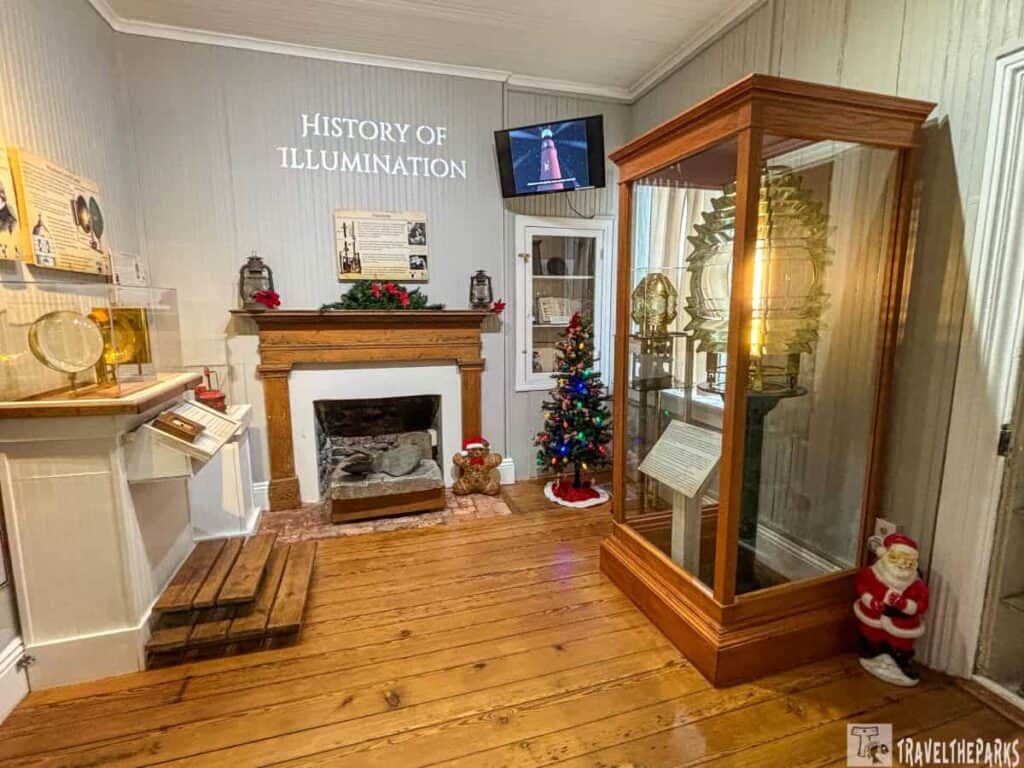
In this exhibit, we were able to see how lighthouses originally used candles and oil lamps, such as the Winslow Lewis light. As technology progressed, Fresnel lenses afforded greater visibility of light over longer distances. Exhibits point out the major inventions, such as electric lights and modern LED systems. Each display shows how these changes helped ships navigate safely.
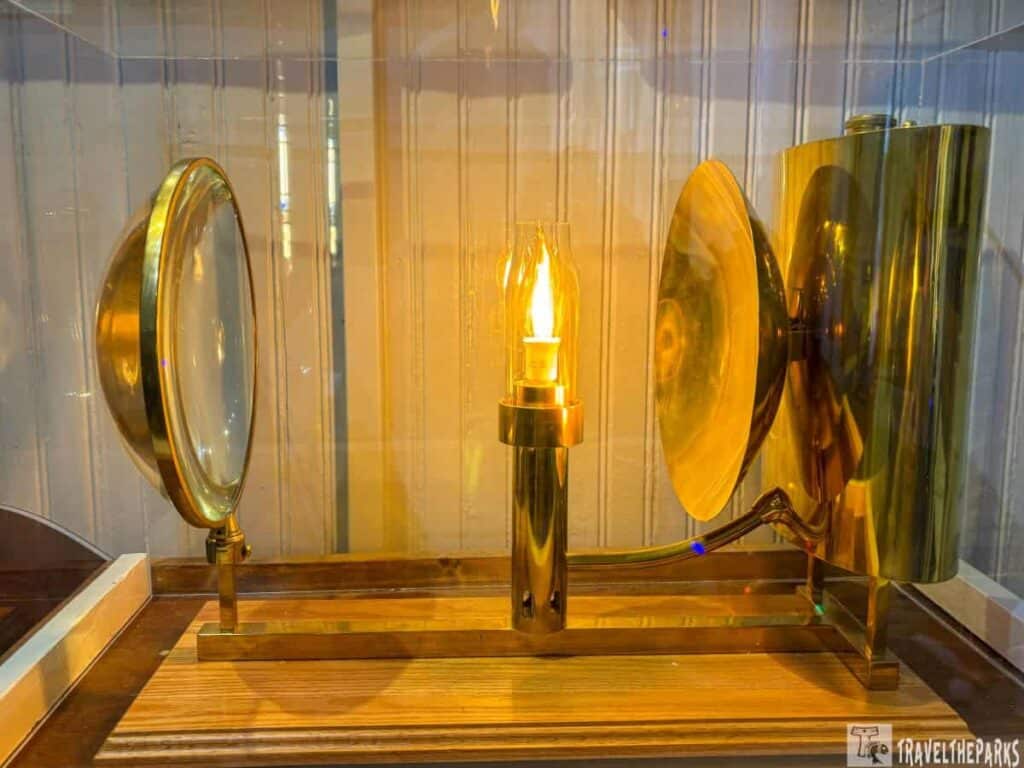
At the museum’s lower level, you will find the Industries of Pensacola exhibit. Descending the stairs, one arrives into the simulated hull of the USS Constitution. It again transported us back in time. Most fascinating was the display of the bunkroom quarters. The cramped bunks truly surprise me—who knew that the beds were so short? Another exhibit was the assistant lighthouse keeper’s room. It offers a rare glimpse into the living conditions.
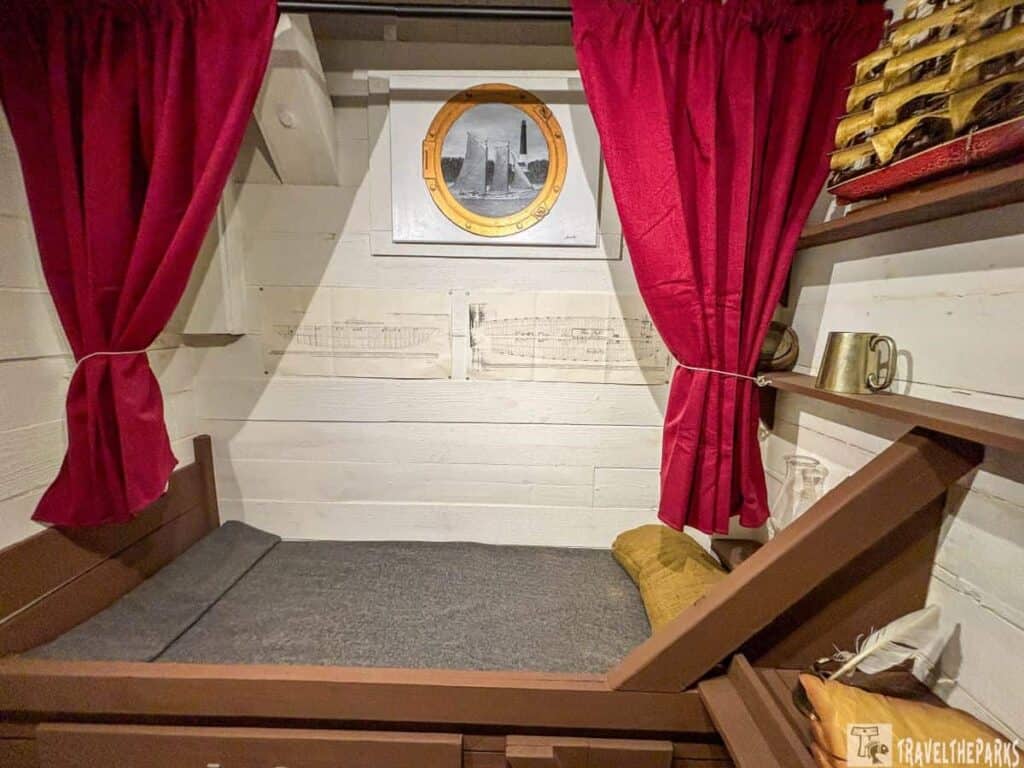
One of the museum’s more poignant displays talked about the personal stories of lighthouse keepers. These stories help visitors to connect meaningfully with the past. For me, they added a human element to local history. Each keeper’s story reveals their hard work, the day-to-day duties to keep the light glowing, guiding sailors home safely. These stories helped us to understand the lighthouse’s essential role. It is important to understand the real-life challenges faced by its guardians.
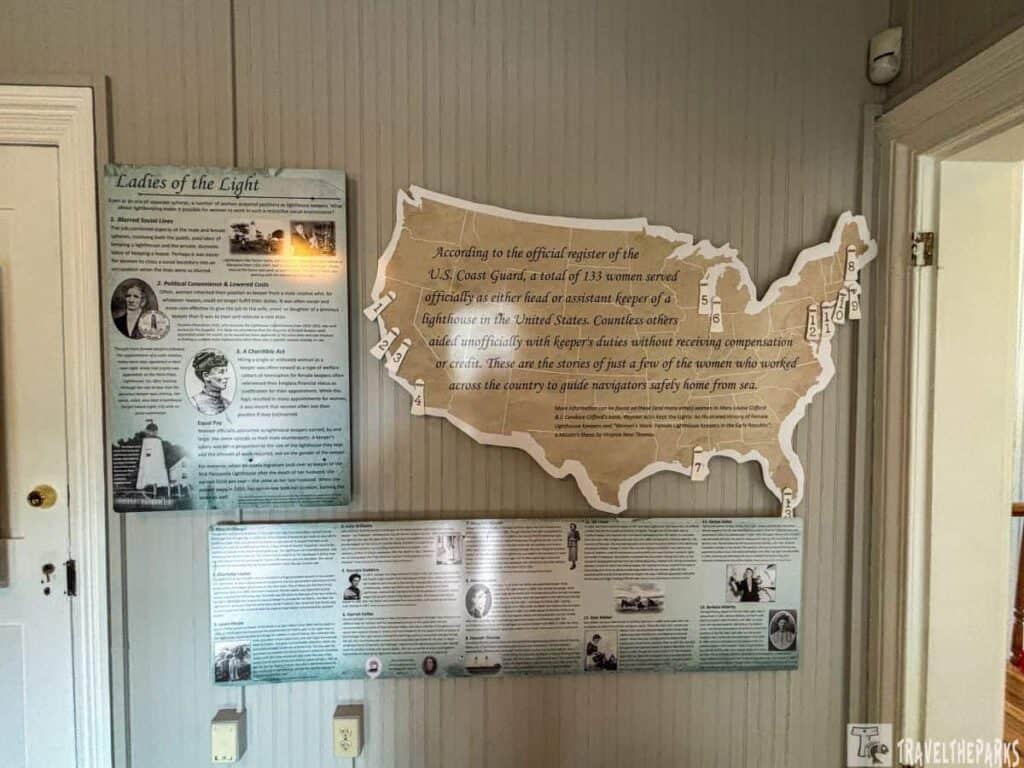

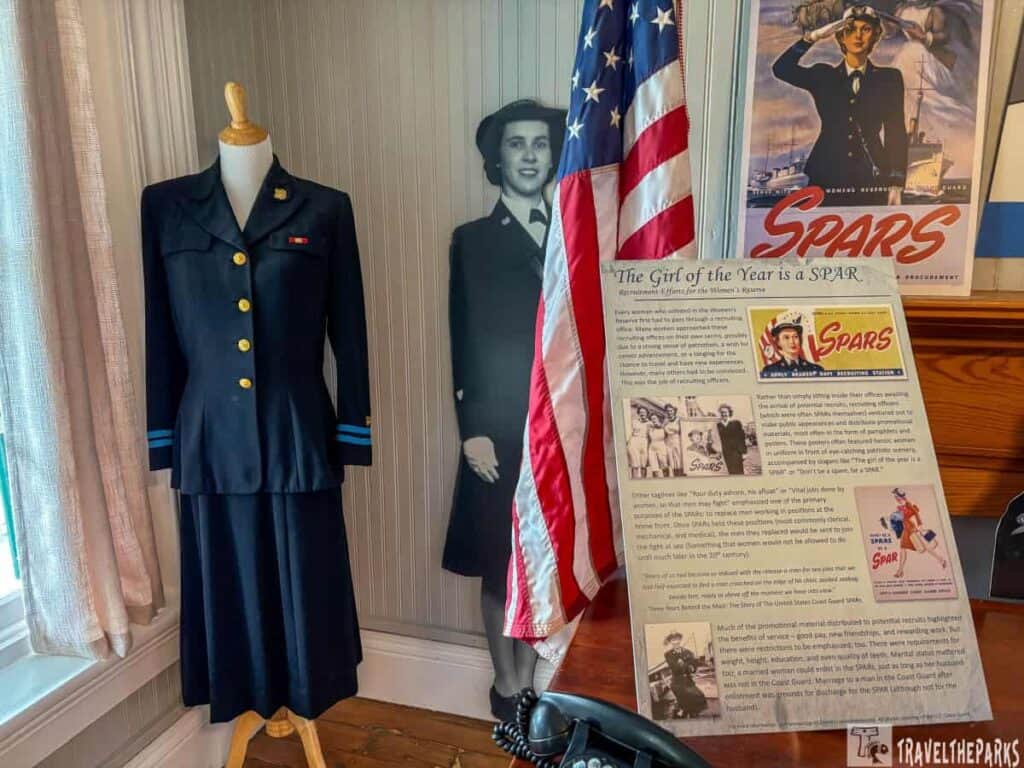
4. Honoring the Role of Women in Lighthouse History: Pioneers and Keepers
It was quite a marvel to read through the “Women Who Lit the Way” exhibit. Women have played an important role throughout lighthouse history, many times filling positions that were held by men. Many were lightkeepers and did an outstanding job keeping sailors safe, and for that, they received little to no compensation. This exhibit shares the behind-the-scenes stories of these women, their devotion, and their bravery that kept the lighthouses shining brightly. It also acknowledges the first female Coast Guard, SPARs, who paved the path for women in the military. Their actions have chiseled a path for many more to follow and prove to the world that courage knows no gender.
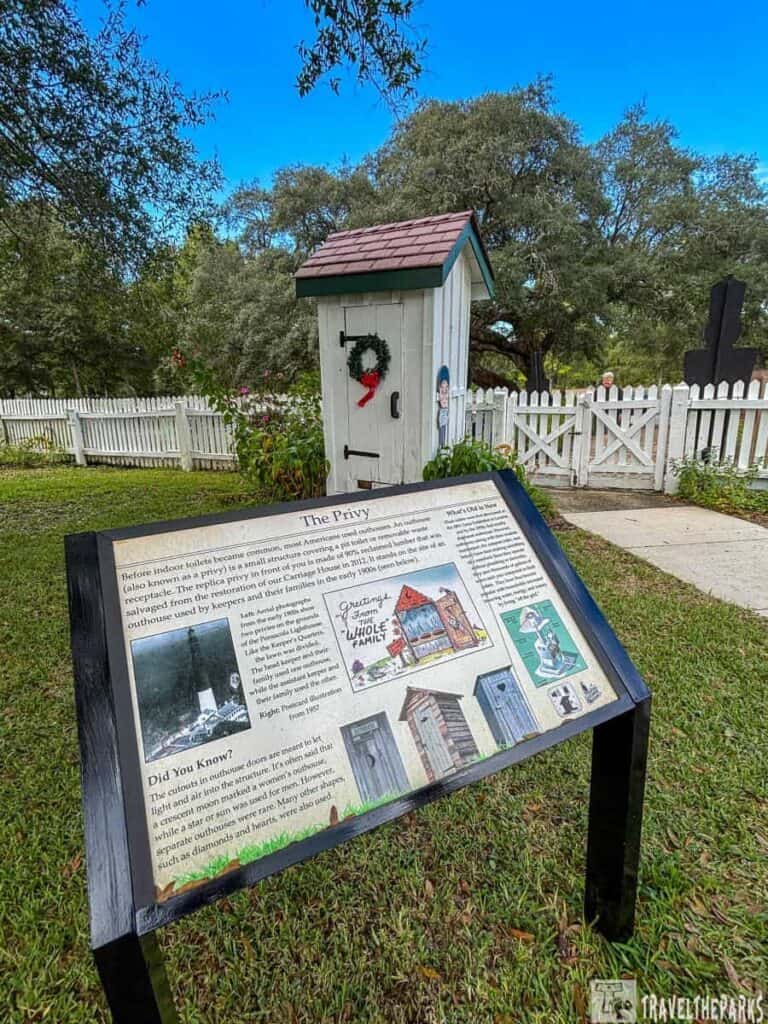
5. Tour the Outbuildings of the Pensacola Lighthouse
A tour around the outbuildings of the Pensacola Lighthouse helped us to better understand the day-to-day operations of this iconic landmark. The first stop, the humble yet essential privy, reminded us of the often-overlooked aspects of lighthouse life.
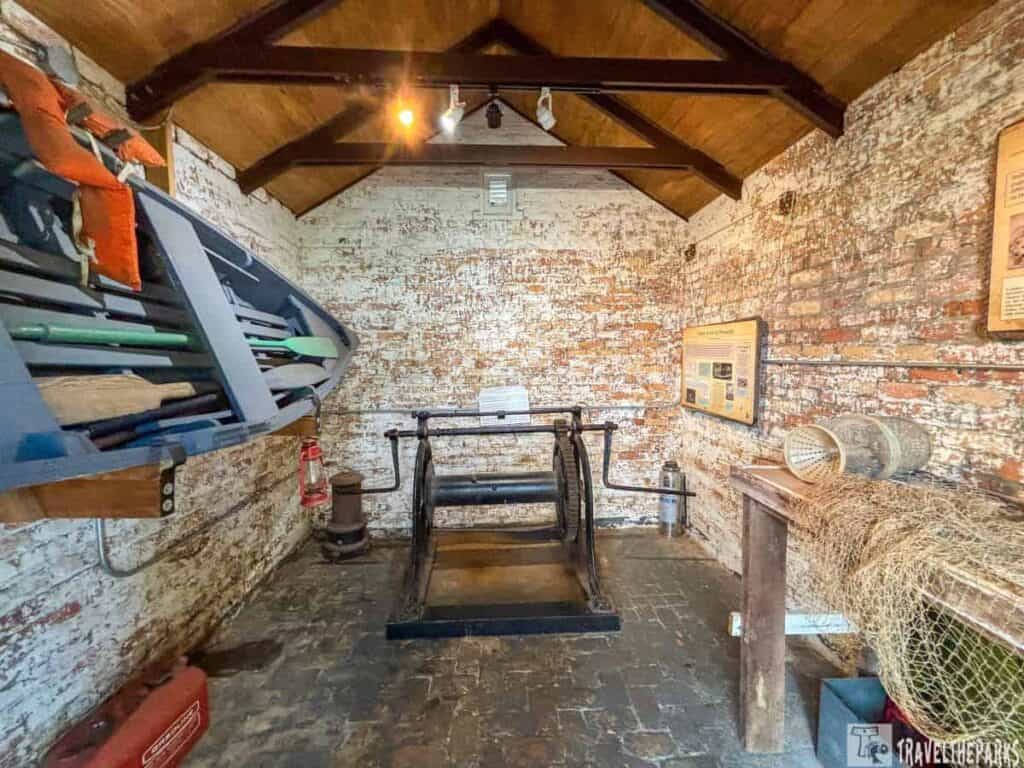
For me, one of the more interesting buildings was the oil house. In 1892, builders constructed it to house the kerosene powering the lighthouse’s giant beacon. When one stepped inside, it almost seemed that the smell of kerosene remained and instantly transported one back in time. This tiny building is now an exhibit that explains not only how the lighthouse worked but also highlights the yellow fever epidemics that plagued Pensacola during the 19th century.
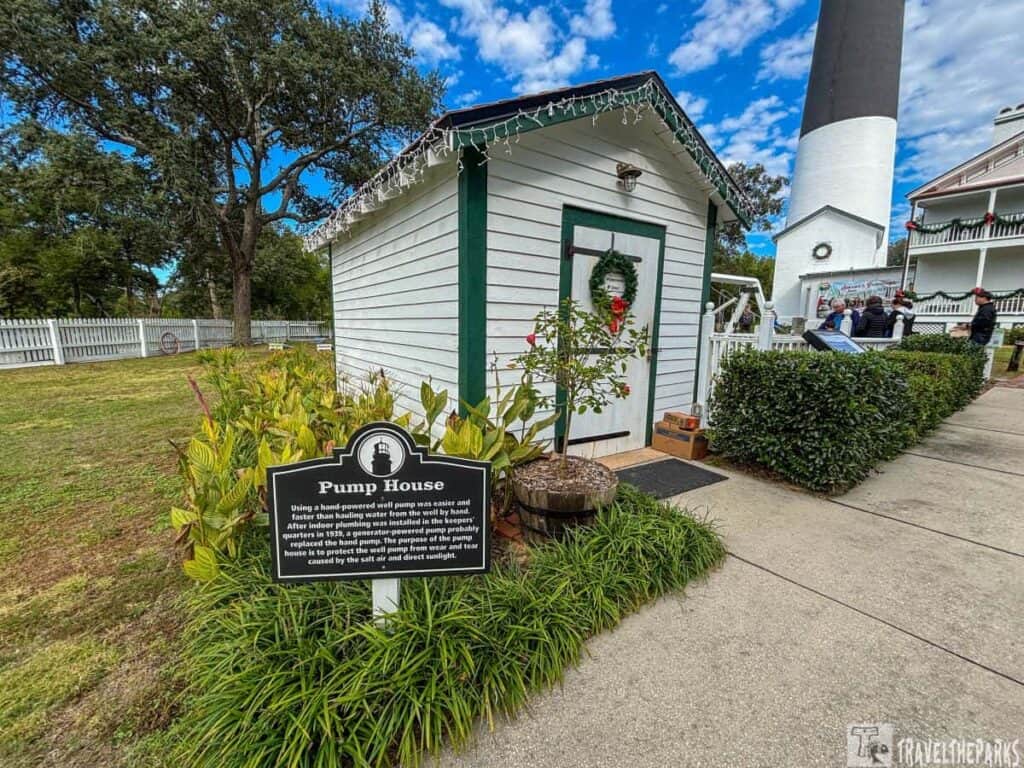
Other key infrastructure included the pump house, housing a hand-powered pump, which helped in transferring water from the well to other areas of the lighthouse, especially for the keepers’ domestic needs. A well was dug on the grounds to supply the fresh water required by the lighthouse keeper and his family.

Nearby, the pulley station was used to help lift heavy materials and equipment, such as fuel barrels for the light, upwards toward the tower. Today, it’s a great interactive display for the kids to practice tying knots and to see how the pulleys work.
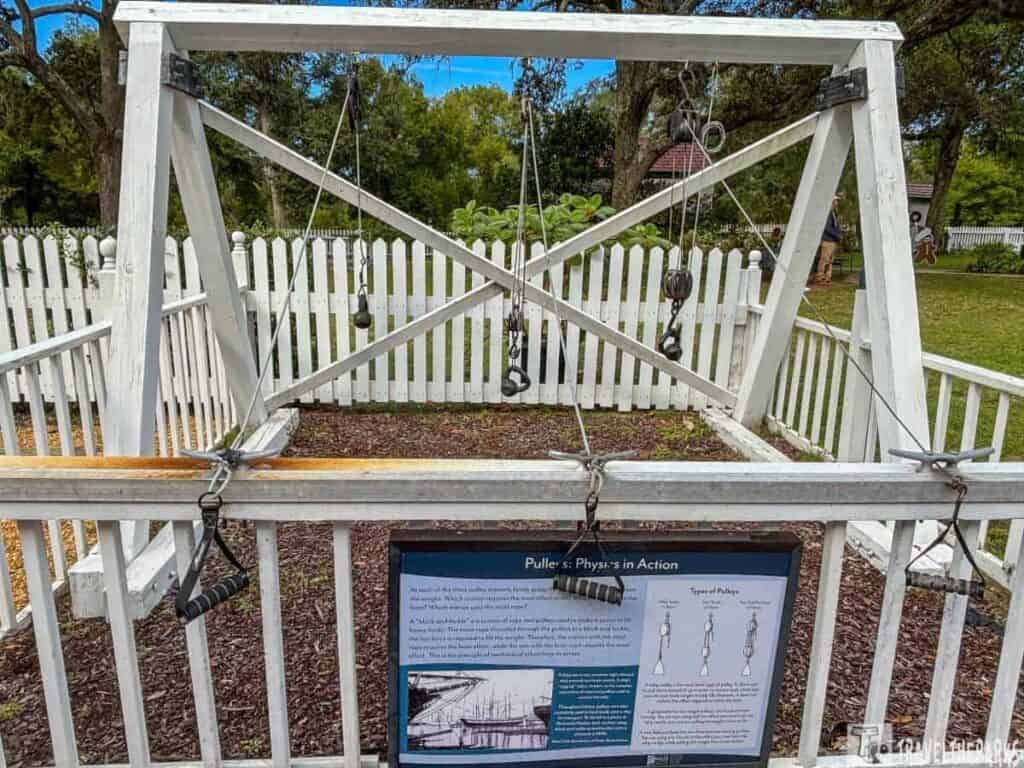
6. Walk the Hart’s Hammock Archaeological Park
New this year is the Hart’s Hammock Archaeological Park. It serves as a tribute to the legacy of Charles Hart, a former slave who became a prominent figure in Pensacola’s history. Charles Hart’s story is one of perseverance, resilience, and leadership.

7. Attend Special Events and Programs Like Enjoying the Holiday Spirit
During the Blue Angels season, the Pensacola Lighthouse often hosts special events and programs to celebrate the squadron’s legacy. During certain times of the year, visitors can watch the Blue Angels rehearse their breathtaking routines from the lighthouse grounds. The sight of these jets zooming overhead against the backdrop of the Gulf Coast is truly awe-inspiring.
The grounds burst to life during the Christmas season, dazzling visitors with brilliant decorations. We wandered amidst the twinkling lights and crisp winter air, captivated by the enchanting, festive spirit. This magical experience captures the very essence of the holiday, delighting the senses with unforgettable sights, sounds, and tastes.
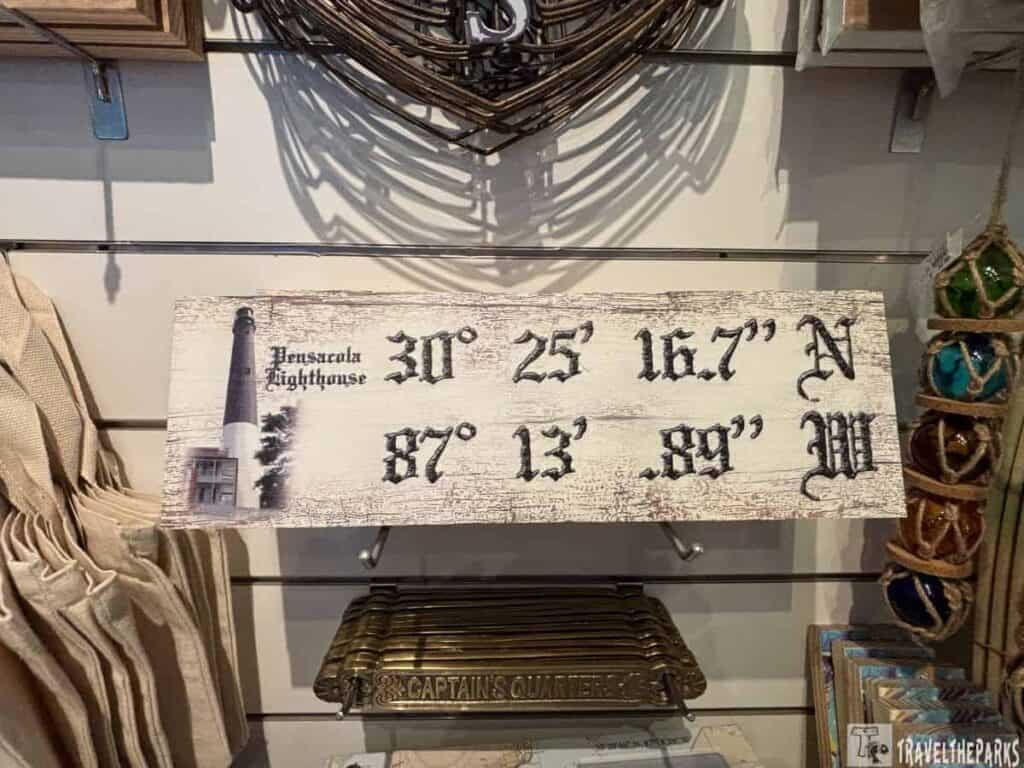
8. Look for the Ghosts That Haunt Pensacola Lighthouse
The Pensacola Lighthouse stands out not just for its history but for its haunted reputation. Many visitors report eerie sightings and strange sounds at the site. Ghostly figures and unexplained lights have become common tales among locals. This lighthouse captures the imagination of those curious about the supernatural. Anyone eager for a thrill will find plenty of spine-chilling stories to explore. Uncover the mysteries and legends that make this lighthouse a focal point for ghost hunters. The haunting experiences here leave a lasting impression on those who dare to visit.
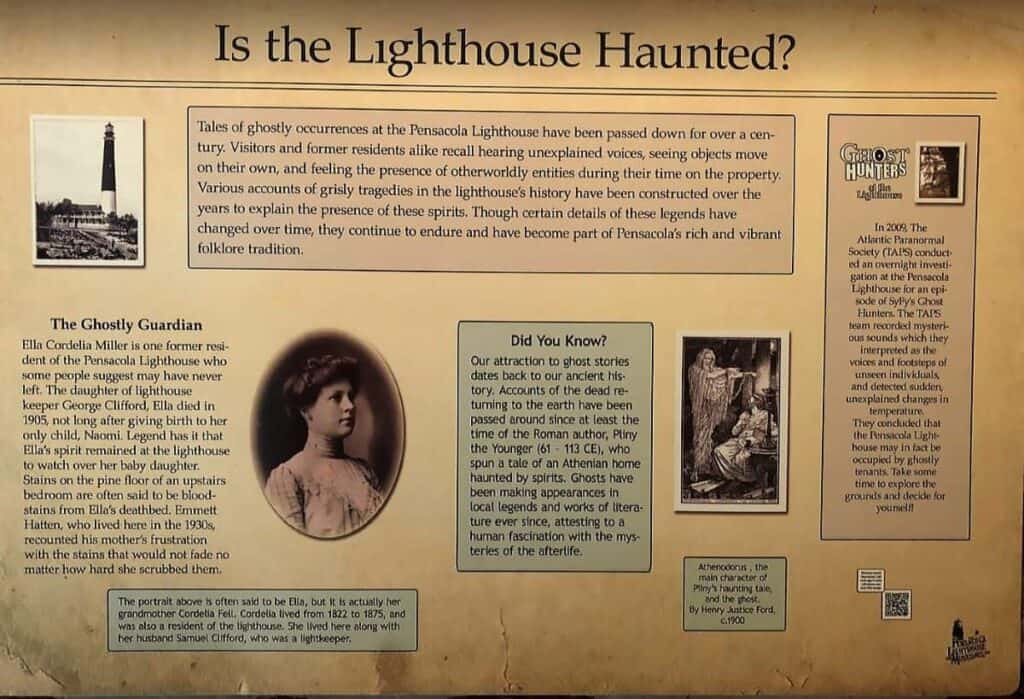
9. Visit the Gift Shop at Pensacola Lighthouse
Before you leave, don’t forget to stop by the Pensacola Lighthouse Gift Shop—it’s a treasure trove of unique items. I loved the wide selection of lighthouse-themed artifacts, including mini replicas, vintage-style signs, and unique coastal decor. Some pretty cool T-shirts and hats too.

10: Enjoy the Sunset on the Beach
We were staying at the campground on the Gulf Islands National Seashore. Some of the most beautiful beaches are close to the Pensacola Lighthouse. Walk down and enjoy the azure water by just taking an unrushed walk down a pristine shoreline. It’s a perfect way to end your day watching the sun descend into the crystal-clear waters of the bay.
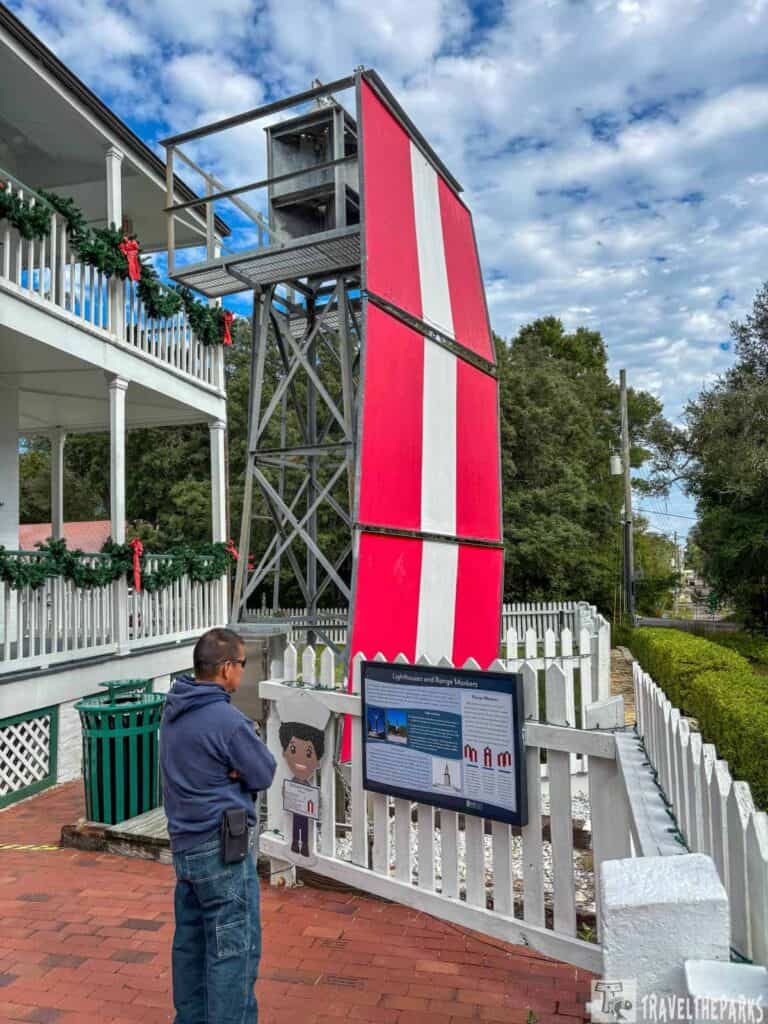
Once you finish your visit to the Pensacola lighthouse, you could have some time to explore the nearby National Naval Aviation Museum or Fort Barrancas, which is part of the Gulf Islands National Seashore. We combined both historical landmarks on our southern road trip. It provided us with a clear view of the area’s importance in the military and its cultural history.
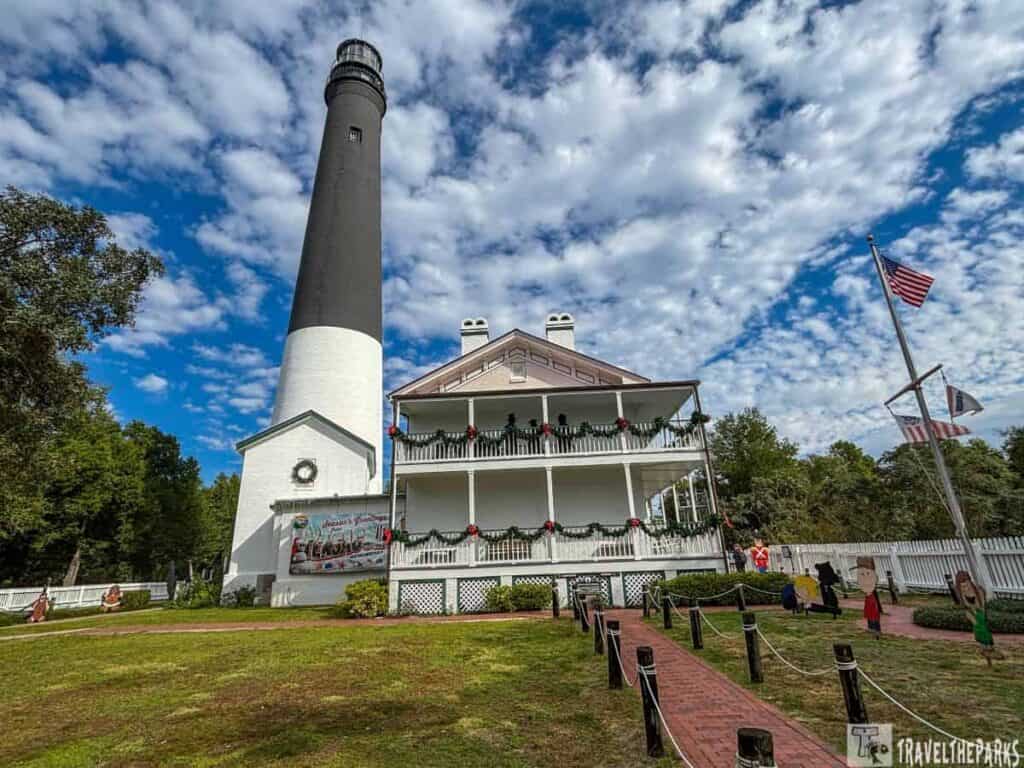
Final Thoughts: 10 Amazing Things to See at the Pensacola Lighthouse
We had a great time visiting the Pensacola Lighthouse! It might not be the tallest or the most well-known lighthouse in the U.S., but it definitely has a charming history. Even if you’re not super into lighthouses, checking out the Pensacola Lighthouse can still be an amazing experience.
Whether you’re visiting for a few hours or spending the whole day, each moment here brings a chance to create lasting memories. Don’t rush; there’s so much to appreciate. You’ll leave with a deeper appreciation for this place.
Have you visited the Pensacola Lighthouse or another famous lighthouse? We’d love to hear about your experience and what other lighthouses are on your bucket list! Happy travels!



